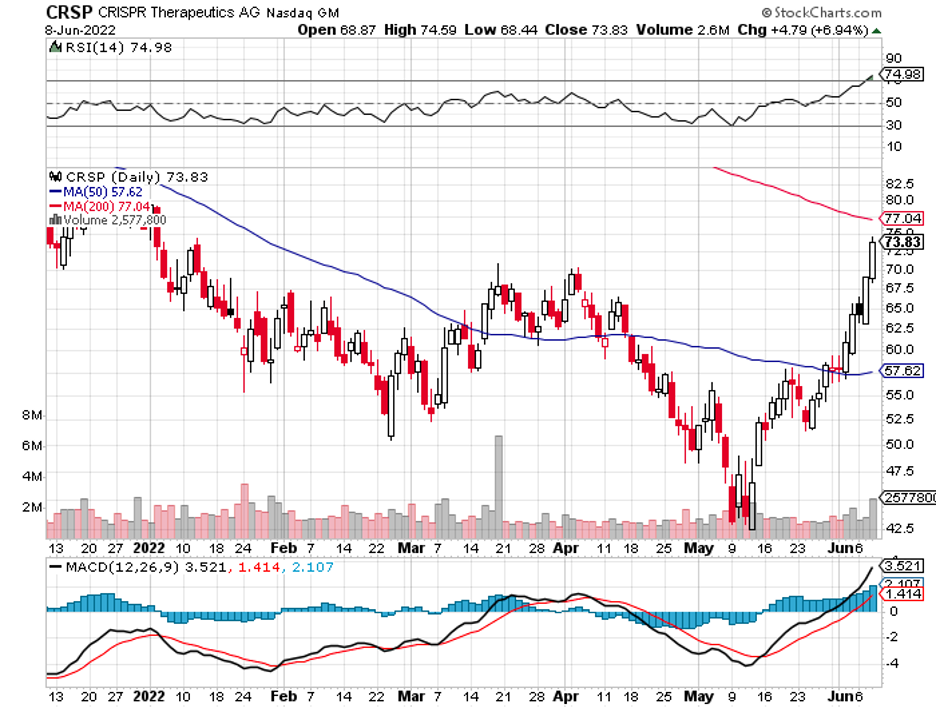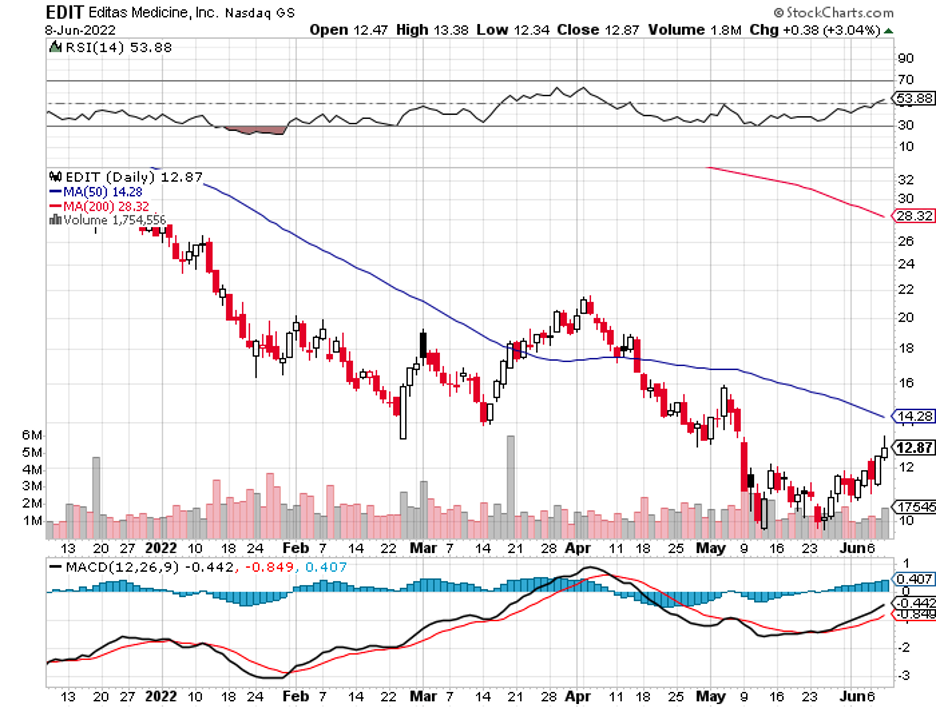No advancement in the biotechnology and healthcare sector is quite as mysterious, promising, and powerful as CRISPR.
It has long captivated the attention and imagination of serious scientists and researchers alongside the media and the public. It’s an understatement to say that it’ll be a significant area of development for decades to come, thanks to its capacity to remodel our genetic code accurately.
Among the frontrunners in the burgeoning CRISPR segment are CRISPR Therapeutics (CRSP) and Editas Medicine (EDIT).
Both biotechs have promising pipelines packed with innovative and potential cures for previously incurable genetic conditions.
The CRISPR programs appear to be the most advanced among their candidates despite still being in the early stages.
Nevertheless, any progress reported could likely push the entire CRISPR group to surge substantially.
Fortunately for this sector, there are at least two major catalysts in 2022.
CRISPR Therapeutics, which leverages the CRISPR technique, aims to submit its blood disorder treatment candidate, CTX001, for regulatory review by the end of 2022.
This program, which is developed in collaboration with Vertex Pharmaceuticals (VRTX), specifically plans to target sickle cell disease and beta-thalassemia.
So far, results have been positive, and the consensus is that it’s only a matter of time before both companies finally launch the much-awaited treatment commercially.
Another catalyst opportunity for CRISPR stocks this year is from Editas Medicine.
While this stock is not as popular as CRISPR Therapeutics, I think it holds the potential to become a massive star in the CRISPR gene-editing sector. What makes this biotech fascinating is the sheer number of candidates in its pipeline and the variety of options and applications they have for the technology.
At this point, Editas is focused on exploring the application of its in-vivo CRISPR genome editing therapy, called EDIT-101, to patients suffering from Leber congenital amaurosis 10 (LCA10).
LCA10 is an inherited and severe eye disorder that primarily affects the cornea and leads to a severe loss of vision or even blindness at an early age. This is caused by the mutation of the CEP290 gene.
This condition is an ideal target for Editas because CEP290 gene mutation can be found among 20% to 30% of LCA10 patients.
More than that, there is no existing approved treatment for it. This means that if Editas successfully completes the clinical trials for EDIT-101, it will possess a monopoly of this market.
Thus far, Editas has been delivering promising results on this treatment, and shareholders can expect definitive results from the study by the second half of 2022. Needless to say, positive data from the trials would tremendously boost Editas shares.
Aside from EDIT-101, Editas is also working on EDIT-301, which could be a competitor of CRISPR Therapeutics and Vertex’s CTX001.
However, the more exciting development for Editas is its advanced cell treatments in the oncology sector.
Recently, Editas announced its new gene-editing technology, called “SLEEK,” which means SeLection by Essential-gene Exon Knock-in.
This is groundbreaking because it improves cell therapies in a couple of factors. For example, it can deliver better knock-in of trans gene cargos. This means that SLEEK is more efficient in terms of artificially introducing a new gene into the genome of a patient.
It remains to be seen how Editas plans to take advantage of SLEEK in its future candidate. One thing’s for sure, though; this biotech has multiple shots on goal, making it hard for Editas to miss.
Taking all these into consideration, it’s safe to say that it’s not yet too late for investors to position themselves for lucrative long-term gains courtesy of these CRISPR stocks.
Despite the sharp decline in the gene-editing biotechnology sector over the past months, practically all the applications of CRISPR technology remain untapped to this day.
The most convincing tailwind for CRISPR-focused stocks is that the market for CRISPR-based treatments is estimated to multiply in value by approximately 13-fold between 2019 and 2030.
For that target to be reached, cutting-edge biotechnology companies should step up and develop the first generation of CRISPR-centered treatments. Considering where things stand right now, it looks like they are on the right track.


